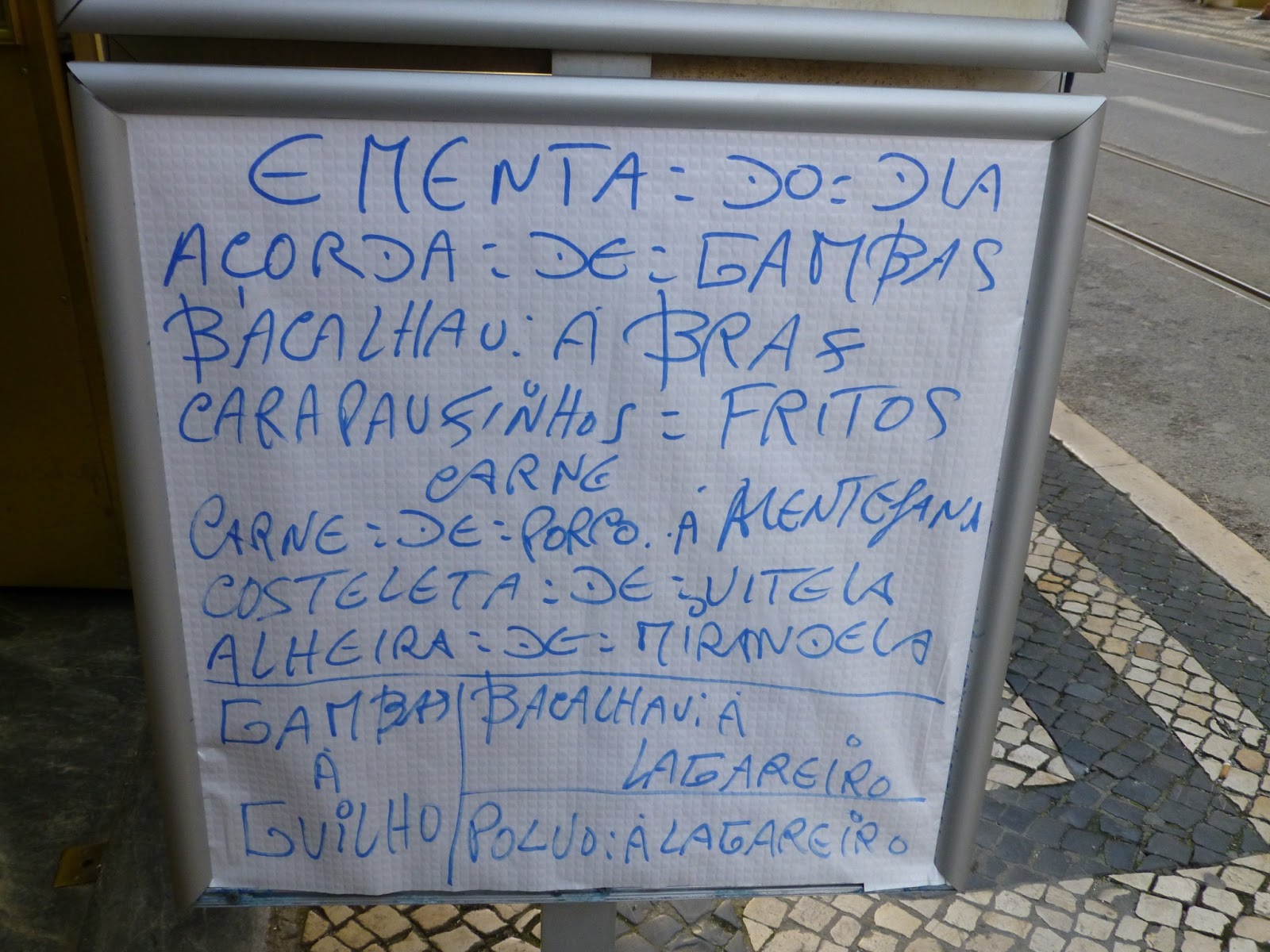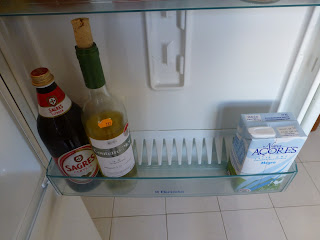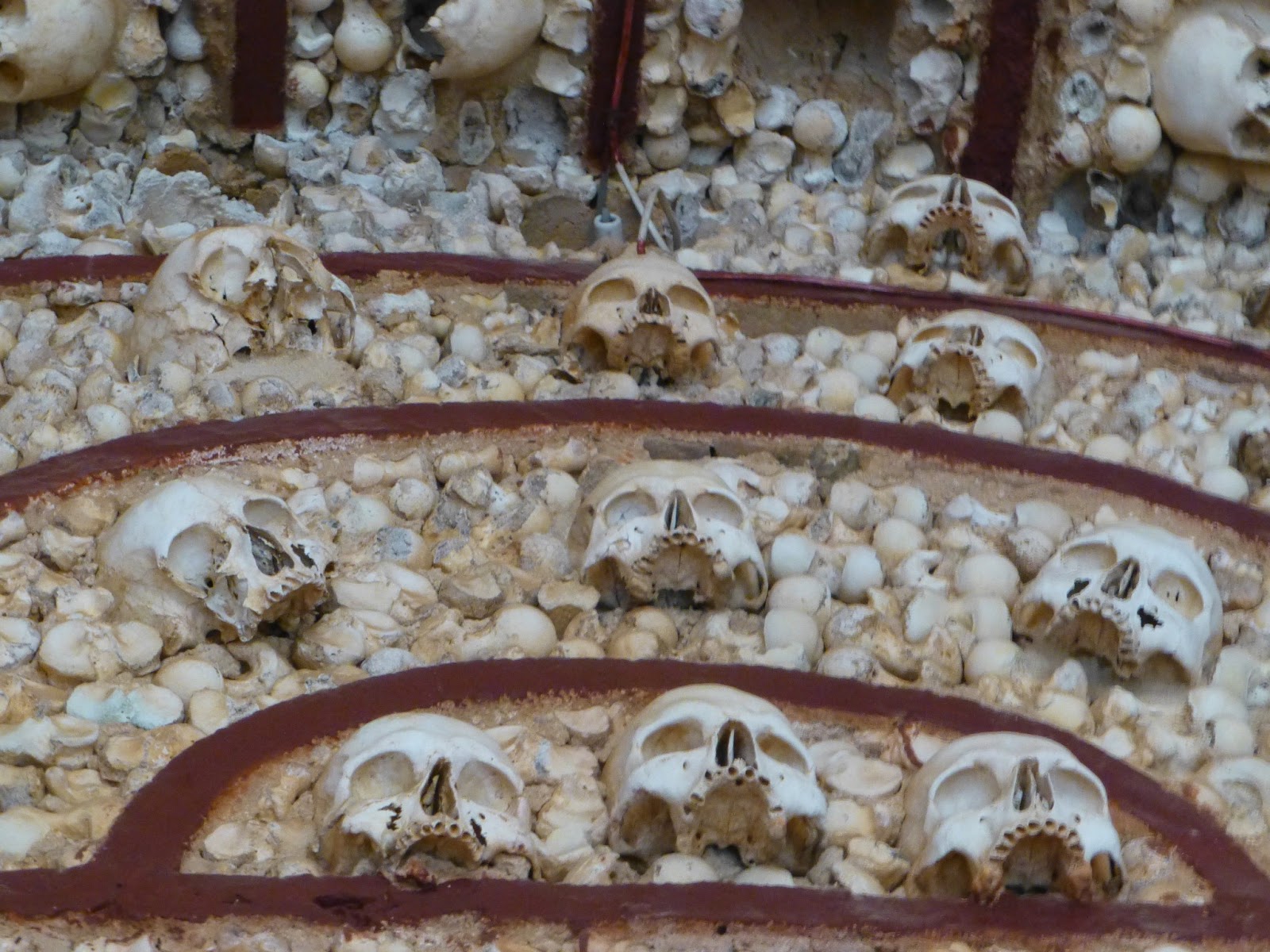 |
| From the huge, fascinating Carriage Museum in Belem outside of Lisbon: Men who rode the horses pulling carriages needed two kinds of boots: a seriously reinforced one for the side next to the other horse (on left, above) so the leg doesn't get crushed by the big horses, and a regular one for the outside foot. Of course. |
 |
| Two more of the reinforced inside boots. |
 |
| Gentried girl's sidesaddle from the 1700s, with a seat belt. |
 |
| This royal Portuguese boat was used for state occasions. I didn't know they did this. |
 |
| Tiny, delicious donut. Portugal is known for its pastries, indulgences, and with good reason. |
 |
| Calouste Gulbenkian, an Armenian, once the wealthiest man in the world. A major force in art collection and a philanthropist. His generosity graces much of Iberia, thanks to a major kerfuffle with the Brits. |
 |
| Portuguese penmanship leaves much to be desired. -- as indecipherable as their spoken language is unintelligible. Okay, user error. |
 |
| Random pharmacy window -- shaving with a brush is alive and well in Portugal. |
 |
| Typical electrical wiring arrangement. |
 |
| The Holy Family are often dressed very finely in coordinated outfits donated by the wealthy. We saw a display of one Holy Family's wardrobe, ca. 1800s. |
 |
| Because Mary's standing and Joseph's kneeling, her stuff is bigger. Jesus' clothing consisted of mostly a blanket. |

 |
| And they even wore undergarments. |
 |
| Dog food, sold in chubs. |
 |
| Refrigerator doors sometimes have a slip guard. |
 |
| TP in vibrant colors. I assume they've conquered the color transfer issues. |
 |
| Bacalhau, dried salted cod, the Portuguese national dish. |
 |
Bacalhau is a huge section of any grocery - smell is sooo big.
I tried a few different ways, but don't like bacalhau. At all. |
 |
| Cuttlefish bones we found on a barrier island in southern Portugal. |
 |
| Happy skeleton from Mexico, 500AD. From Lisbon's Pharmacy Museum. |
Bones can be used as a lovely decorative element. These are from a chapel in Faro, Portugal, the parts of over 1200 monks grace this chapel. We saw another bones chapel in northern Portugal -- with the femurs used for longitudinal emphasis.
 |
| Ceiliing. |
 |
| Some traffic lights are large at the top, and with a smaller one in easy driver's sight lower down. Nice. |
 |
| The device on the wall is the hairdryer. |
 |
| Called a trash island, and all over Portugal. For trash and recycling. No household trash pickup necessary. Makes sense, given the highly concentrated urban dwellings and narrow inner city streets -- a concentration which is not unlike Portland's green approach. |


























No comments:
Post a Comment